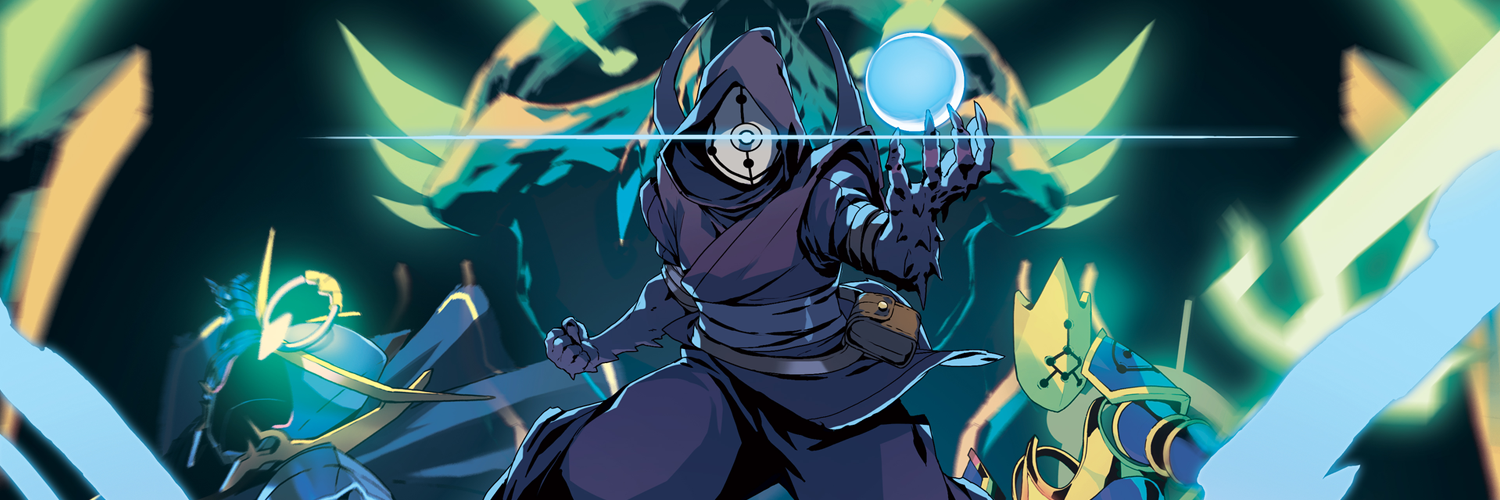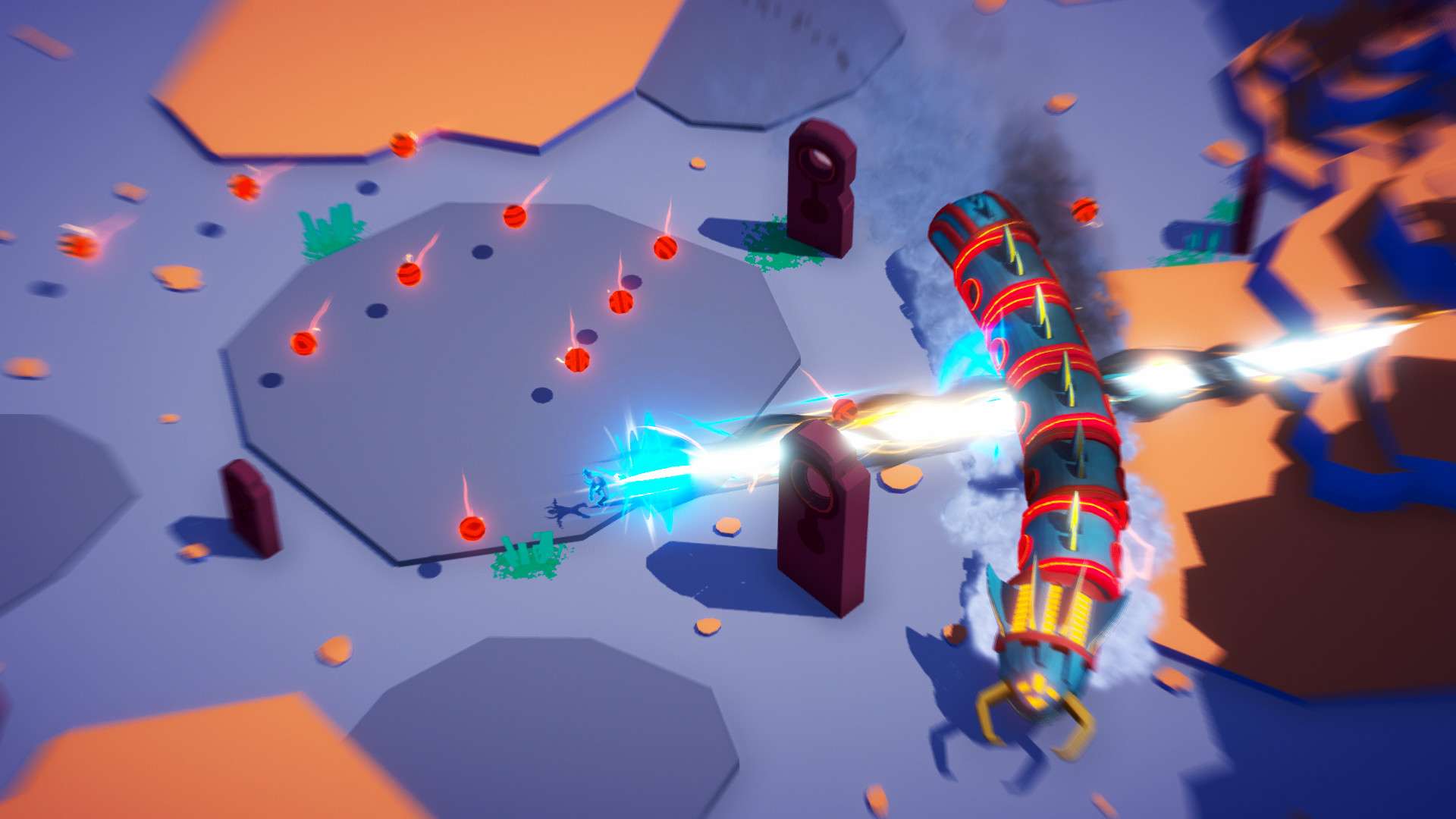
Godstrike PC Review
Let’s not beat around the bush – Godstrike is clearly influenced by 2016’s masterpiece, Furi. Both games are short, action-packed experiences focused around intense boss battles and bullet-hell mechanics. Though, unfortunately, Godstrike doesn’t manage to reach that same level of adrenaline-pumping hair-raising thrills that its predecessor became a beloved classic for. Honestly, it doesn’t even get close. How could it? Furi was pretty much perfect to the point where I haven’t seen anybody else even attempt to replicate the gameplay (or the soundtrack!) – it’s a ballsy move to so much as try. Godstrike is instead more like a love-letter to Furi and that’s something I can totally get behind. That’s not to say it doesn’t put its own spin on things. The customisation of both passive and active abilities can totally change a fight, and the way it implements the counting down of time as a central theme (even going so far as to completely replace the player’s health bar), is not only mechanically unique but perfectly positions itself for the speedrunning community, which is what the goal seems to be.
The combat noticeably lacks the melee interactions and parry system that one might expect from a title shadowing Furi, instead choosing to concentrate more on the ranged twin-stick-shooter side of things. Even the dash isn’t available as a basic move and is only accessible as a ‘teleport’ active ability, which need to be charged up before each use via the souls bosses often drop upon being hit. Replacing these core powers is the freedom to build out the hero however you want, using a selection of up to four free passive and four active talents, that each cost X amount of seconds based on how strong they are – subtracting valuable ticks of the clock (which is also used as health) from the battle countdown before you’ve even begun. This is the reason I’m so excited to see what the community manages to do with it. Not only does it allow for players to lean into their strengths and/or take advantage of a foe’s weaknesses, it also begs the question of how efficient one can be. Starting with more time is great for the leaderboards in theory, but not being able to pump out burst damage with special attacks may actually be detrimental in the end, as it takes longer to down the opponent. The trick is to find where to draw the line.

There are ten bosses total, of varying difficulty, and the best way to experience them is to first go through story mode. Outside of the small hit of lore up front and each boss starting with a cryptic message on their respective loading screen, the narrative seems to be the last thing on anybody’s mind. What really matters is the distinct design, attack patterns, and phases of each grand enemy that must be figured out in order to overcome them. The biggest win here is how different every fight feels – how each stage is memorable in its own way (even if just because it’s the first boss and it’s name is ‘Tutoriaal’, which is nothing short of genius). Story mode only has a small subset of available skills for the player to choose from, as a means to test through limitation I suppose. Arena mode, on the other hand, is where you choose which single boss to tackle using any combination of all the equipment in the game. It’s the playstyle I expect most high score hounds will be focused on.
From there we also have challenge mode and daily challenges – the same thing but with each player only having a single chance and playing from a set seed that changes, well, daily, allowing results to be fairly compared. These are runs down one of either two paths of five bosses, with the successful completion of each one rewarding the player with more random ability unlocks as they progress. There’s also the chance to gamble for an unknown bonus/penalty every now and then, ranging from things like enemy projectiles moving slower to simply taking more damage. It feels like a bit of a weird thing to have layered on top to be honest but at least it keeps things a little more interesting, as I found the lack of decent replayability here to be disappointing overall. By limiting play to just two separate boss-paths, it quickly becomes repetitive and disengaging even with the choices of which skills to acquire, especially if you get the same path back-to-back several times. I would have much preferred to just have seen the duels fall in random order, difficulty spikes be damned. Or perhaps better still would be for each conflict to have an easy, medium, and hard version depending on where it falls. Anything to avoid travelling that same monotonous track again.

Another thing to mention is that I never actually beat the story. The final phase of the last boss keeps killing me with seemingly inescapable attacks, including a laser beam that can be shot directly at you even when strafing to avoid it. It was terribly discouraging, especially after getting to that point with perfect runs just to be instantly blasted down by something I feel I have no power to avoid. This completely killed the ‘one more try’ feeling for me, making each consecutive endeavor a grind. Whilst not a common occurrence, and although I made quick work of most of them, there are other bosses that have attacks like this too. And this effectively eliminates the best mechanic in the game – that the timer never actually runs out on its own, leaving the final hit entirely down to the player. This beautiful twist creates hype (and anxiety) like nothing else. One final chance.
What I would love to see from Godstrike is: 1 – improved enemy attack visibility and the fixing of unwinnable positions to cement itself as a serious icon in the world of leaderboard scrapping; and 2 – a steady stream of DLC content in the form of extra bosses, new powers, and maybe more ways to play to fix its limited content and absence of deeper replayability. There’s an opportunity for something special here and I seriously hope the team manages to make the most of it side-by-side with the community.
